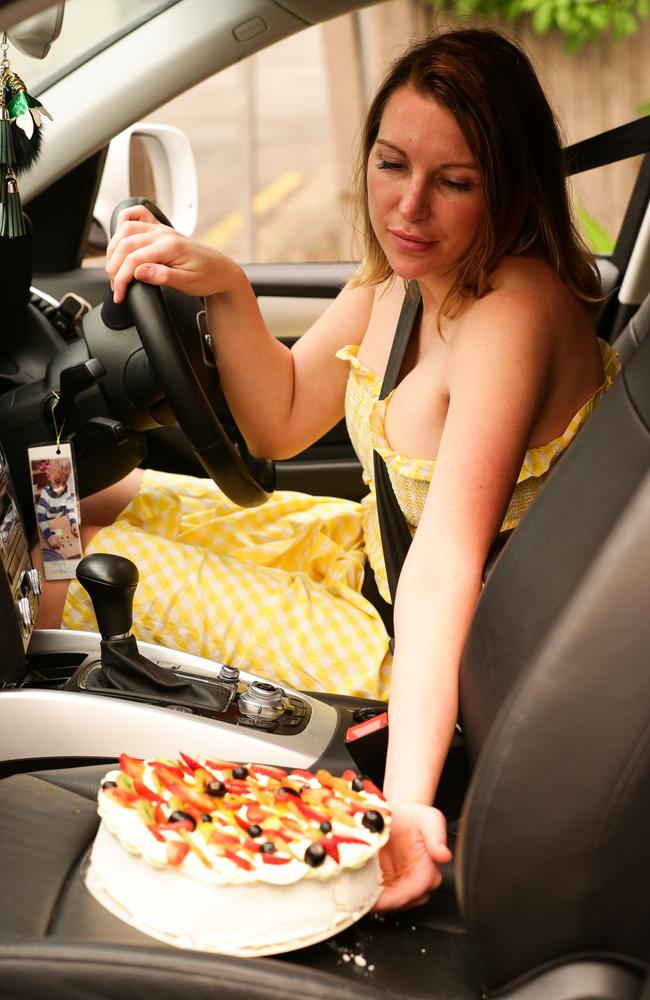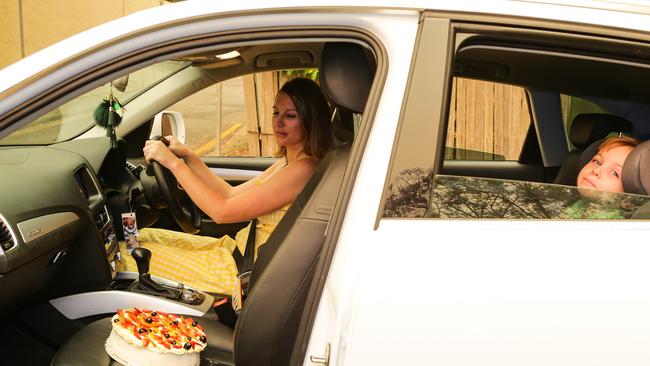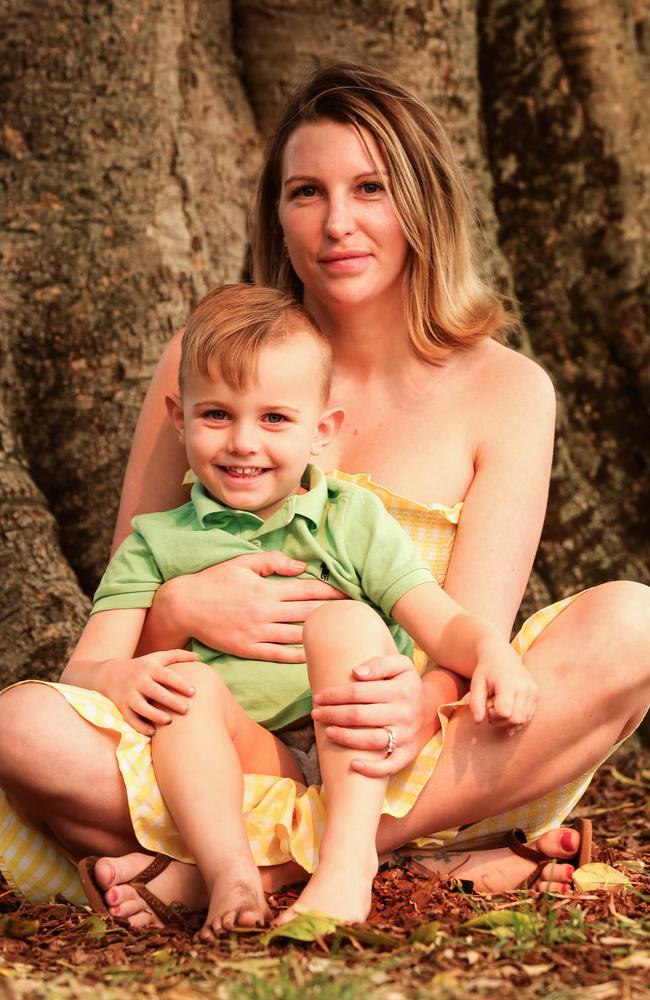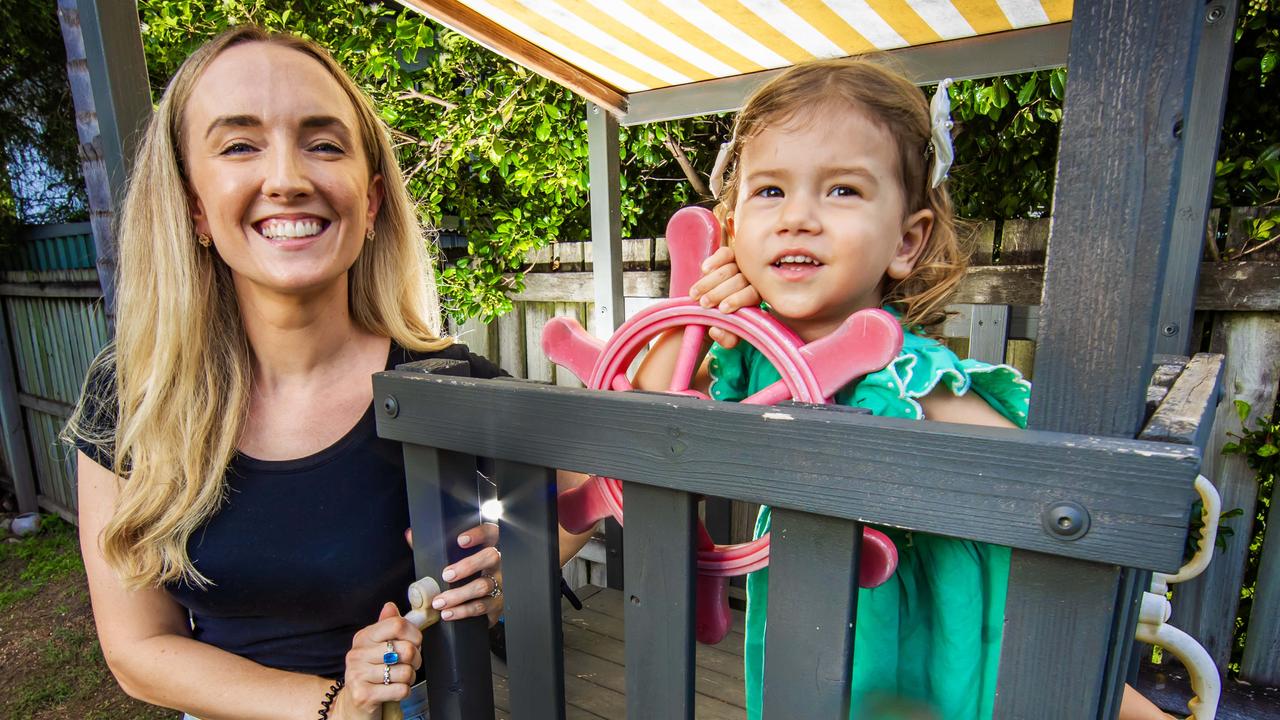NRMA Insurance experiment shows Aussies drive better with a pavlova than a child
Australians have been delivered a harsh reality check with a new test revealing they admit to placing more value on a $10 dessert than the lives of their own kids. Find out why.

Parenting
Don't miss out on the headlines from Parenting. Followed categories will be added to My News.
Exclusive: Australian drivers are more careful driving with a Christmas pavlova than their own children, new research shows.
The data obtained by News Corp from YouGov Galaxy and NRMA Insurance involving more than 1000 Australians found 77 per cent of men and 68 per cent of women to have a high opinion of their driving skills.
Initially, half of parents said they drive more carefully with children, and only 12 per cent said they drive with caution when transporting something fragile like a pavlova in the car.
But when put to the test in an eight-day experiment involving 20 parents, the study found
95 per cent of the drivers improved their skills and driving when transporting a pavlova in comparison to driving a child, or being alone in the car.
Another 65 per cent had an improvement in their acceleration, 60 per cent were more cautious in braking, and half of those tested recorded a positive change in turning corners.
Forty five per cent recorded a decline in their phone use, and 20 per cent improved their speed.
The experiment has now become a larger road safety TV campaign.

Consumer Psychologist Dr Adrian Camilleri told News Corp each driver’s behaviour while behind the wheel can be explained by the fact they were not driving in a normal, or “autopilot” way.
“These drivers had a cake in the car, it’s a bit out of the ordinary and it is likely to snap people out of an autopilot mode,” he said.
“When people first learn to drive, it’s a skill that requires a lot of attention, but as we become more experienced we go into autopilot.
“We form habits and driving with children to and from work or home can be part of that.”
Kelly Aitken, 35, from Lane Cove in Sydney told News Corp she has found driving with pavlovas, cakes and trifles at Christmas challenging with her son Huxley, 3, in the back seat.

“I have to be careful as I don’t want it to get messy and spill anywhere,” she said.
“At Christmas I have been the driver, but I have also been a passenger holding the cake.
“When I drive with a cake I’m certainly trying to limit the joltiness of the vehicle, I drive a lot slower, but in terms of speed or using a phone, that wouldn’t change if I had a cake or a child with me.”

MORE NEWS
Aussies rate 69 best products you can buy right now
Ten best and worst brands in Australia
Why more Aussies are ditching meat for veggies
Mrs Aitken said like others, she was prone to driving on autopilot.
“I am on autopilot sometimes when there isn’t a distraction, but I do feel I am a safe and confident driver — but you don’t know what others are like around you,” she said.
The survey also showed 72 per cent of drivers rate their driving ability as above average. But few drivers were keen to admit to their bad habits like eating while driving (27 per cent) and speeding off first as traffic lights turn green (26 per cent).
A quarter of those surveyed said they take their eyes off the road to deal with kids fighting in the back seat.

A further 19 per cent said they check their phone at the traffic lights, 18 per cent look at the screen of their phone while driving and drive over the speed limit in other urban areas.
Dr Camilleri said statistically, not everyone can claim they are above average drivers.
“I would imagine the numbers here are under estimated when it came to people who don’t want to admit to being distracted with their kids or phone at a traffic light,” he said.
“Taking your eye off the road for two seconds can result in an accident, and what’s concerning.
“People may not be aware of their driving behaviour and are unlikely to think there’s a problem that needs to be addressed.”
Originally published as NRMA Insurance experiment shows Aussies drive better with a pavlova than a child


